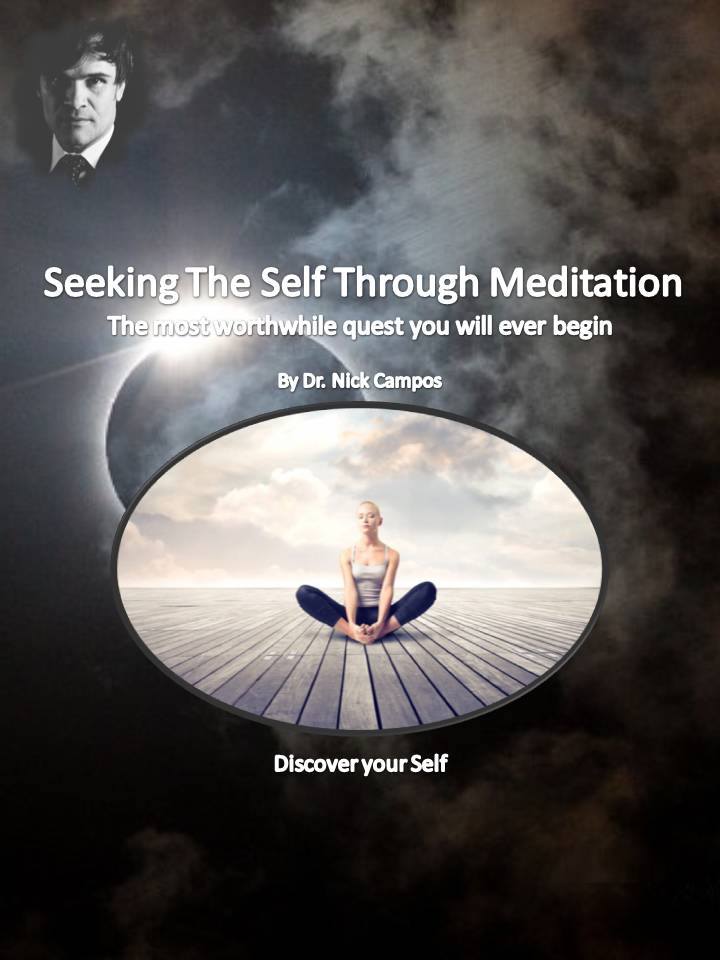 What is meditation? Is it what we speak of when discussing mindfulness? In short, no – meditation is tool, while mindfulness is a state of mind. A good reminder from a previous article is that we spend the bulk of our waking time on auto-pilot. This habitual activity-mode allows us to think while we drive, talk on the phone while typing, or discuss vacation plans while having sex. It is a state of mind; one which we specifically differentiate from being laser-sharp focused – or mindful.
What is meditation? Is it what we speak of when discussing mindfulness? In short, no – meditation is tool, while mindfulness is a state of mind. A good reminder from a previous article is that we spend the bulk of our waking time on auto-pilot. This habitual activity-mode allows us to think while we drive, talk on the phone while typing, or discuss vacation plans while having sex. It is a state of mind; one which we specifically differentiate from being laser-sharp focused – or mindful.
Meditation, on the other hand, is a practice. Without a doubt, regular meditation strengthens focus, and thus it strengthens one’s ability to enter mindfulness, but it is purely a tool, one that needs to be practiced regularly and earnestly to become effective. Greater mindfulness is a consequence of consistent meditation. But meditation is not the only path to mindfulness, it just happens to be an extremely effective one. For sure, the Bhagavad Gita discusses meditation as a form of yoga, and it is a path to awareness, but by no means is it solely so: in fact, greater mindfulness is merely one consequence of many for the meditator. Meditation can be used to come to know the Self, to connect with the Source (or Absolute in Vedantic philosophy), and ultimately to unionize with the Source (samadhi). It achieves these aspirations by dissolving the boundary between self and other, between the one and many, and between sensory experience and reality.
To practice meditation is to attempt to go to the “other” side of thoughts: to allow what comes to come and what goes to go. Meditation is the start to separating the Self (true nature) from the self (body, mind, and sense of individuality). By repeatedly practicing awareness and focus, the proper conditions are beings set for release of self to Self. This state of being is called samadhi and is known to many spiritual disciplines. Because reaching this state is purely experiential, you cannot fully understand it with words alone. In fact, this is true for every stage along the way to samadhi as well, such that meditation leads to an inner unfoldment, a progression, where each layer spread out brings one closer to one’s true Self (not the self of the physical body and mind).
 Meditation, by virtue of this inner unfoldment, leads to a greater receptivity to reality. As awareness expands, illusions become shattered and nightmares neutralize as a greater sense of oneness and orderliness flood the consciousness. Purpose becomes clearer, problems unite with solutions, and visions sharpen; meditation opens channels to understanding and inspiration.
Meditation, by virtue of this inner unfoldment, leads to a greater receptivity to reality. As awareness expands, illusions become shattered and nightmares neutralize as a greater sense of oneness and orderliness flood the consciousness. Purpose becomes clearer, problems unite with solutions, and visions sharpen; meditation opens channels to understanding and inspiration.
Even the physical body changes morphologically through regular meditation. Studies show that meditation is associated with changes in gray matter concentration in brain regions involved in learning and memory, emotion regulation, self-referential processing, and perspective taking. While taking on meditation to attain physical or intellectual prowess might be mundane, these are a few interesting side-effects regular meditation brings.
Understanding that meditation is a tool is imperative, because it is easy for some to mistake the tool for the goal, which can lead to a discontinuation of practice for sheer lack of interest or significance to the practitioner. It can also lead to a false sense of achievement and thus stagnation in others. Understanding that meditation is simply a tool to achieve varying levels of awareness helps the practitioner stay on track and open to each layer of Self as it unfolds. It also allows the practitioner to remain unattached to the tool, because Self-realization can and will occur outside of meditation as well. Attaching to the tool can prevent the practitioner from reaching deeper levels of awareness by holding onto the illusion that the tool is necessary. It isn’t. It’s just a tool.
 That tool is used ultimately to get you to different states of consciousness. Recall that mindlessness, our typical waking state, is the state of unconscious consciousness: minimally aware of moment-to-moment details. And mindfulness is conscious consciousness: intense awareness of moment-to-moment details. Samadhi, then, that state of oneness to which we aspire through meditation, is an entirely different state altogether: we can call it a state of conscious unconsciousness. This is a strange concept to anybody hearing it for the first time…conscious unconsciousness? Appreciating this term is best done by associating it with something we do every night: deep sleep. The sleep cycle is split into four stages: light sleep, moderate sleep, deep sleep, and REM sleep. Deep sleep is about twenty five percent of each sleep cycle and what we call restorative sleep. When a person is in deep sleep they are unaware of everything: their body, their mind, and their individuality. They are conscious in the general sense that they are not dead, but they are dead to the world for the period they are in that state. An even better example is the person who is put under anesthesia, like I was in 2006 to have my appendix removed. Just before the operation the anesthesiologist told me, “This is going to be your cocktail for the night, Mr. Campos.” And the next thing I knew it was, “…Mr. Campos, Mr. Campos, wake up, you’re done.” And that was that, time passed but to me it was instantaneous. I was in a state of unconsciousness, and I was unconscious to it. We go there every night in deep sleep. Every person has had the experience of waking up and thinking, “Where am I, how did I get here?” That’s unconscious unconsciousness. Samadhi is being in a deep-sleep-like state, yet being aware and conscious throughout. Weird, huh? But that’s what it is, conscious unconsciousness: a truly experiential phenomenon. Words cannot describe.
That tool is used ultimately to get you to different states of consciousness. Recall that mindlessness, our typical waking state, is the state of unconscious consciousness: minimally aware of moment-to-moment details. And mindfulness is conscious consciousness: intense awareness of moment-to-moment details. Samadhi, then, that state of oneness to which we aspire through meditation, is an entirely different state altogether: we can call it a state of conscious unconsciousness. This is a strange concept to anybody hearing it for the first time…conscious unconsciousness? Appreciating this term is best done by associating it with something we do every night: deep sleep. The sleep cycle is split into four stages: light sleep, moderate sleep, deep sleep, and REM sleep. Deep sleep is about twenty five percent of each sleep cycle and what we call restorative sleep. When a person is in deep sleep they are unaware of everything: their body, their mind, and their individuality. They are conscious in the general sense that they are not dead, but they are dead to the world for the period they are in that state. An even better example is the person who is put under anesthesia, like I was in 2006 to have my appendix removed. Just before the operation the anesthesiologist told me, “This is going to be your cocktail for the night, Mr. Campos.” And the next thing I knew it was, “…Mr. Campos, Mr. Campos, wake up, you’re done.” And that was that, time passed but to me it was instantaneous. I was in a state of unconsciousness, and I was unconscious to it. We go there every night in deep sleep. Every person has had the experience of waking up and thinking, “Where am I, how did I get here?” That’s unconscious unconsciousness. Samadhi is being in a deep-sleep-like state, yet being aware and conscious throughout. Weird, huh? But that’s what it is, conscious unconsciousness: a truly experiential phenomenon. Words cannot describe.
The main point is that meditation is a tool to get you to a state – the state of conscious unconsciousness. Once you are there the goal changes, but I will leave that for another article. Most important for you, the practitioner, the aspirant, is the revelation along the way. This unfoldment of Self is what changes life for good.












